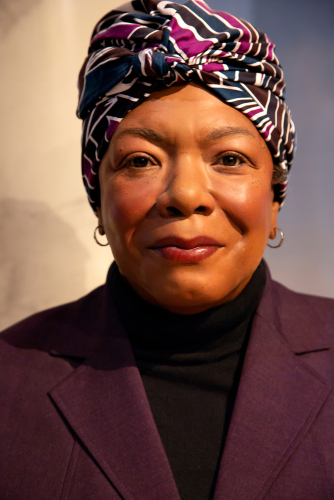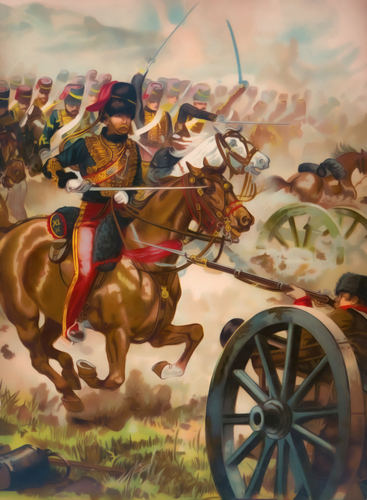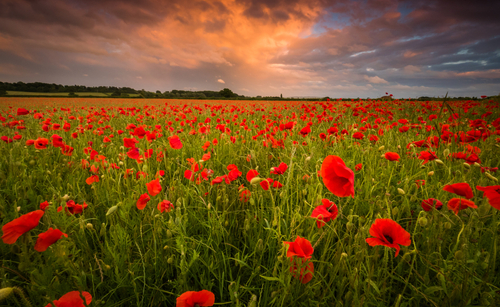By Clare Mellor
Whether you are beginning the GCSE Literature course with a new group of Year 10 students or continuing it with a Year 11 class, it is important to kick off the new academic year with a sense of enthusiasm for the literature that students will be studying.
Many students claim not to enjoy poetry, but I have seen them get the most excited and inspired when studying it. It is, however, a challenge to respond to the wide range of poems in the anthology selection, not to mention facing the ‘unseen’ poetry question in the exam. Therefore, we have to give them both the confidence to approach poetry and the necessary tools to do it.
The examples of the set poems below are taken from the AQA Anthology’s ‘Power and Conflict’ cluster, but the principles apply for those teaching the other exam boards too. And, of course, the unseen poetry is applicable to everyone.
Unseen poetry
I have often used the beginning of a lesson for unseen poetry practice. Using the poems in your anthology that students are not studying for the exam is an easy place to start. If you project a couple of prompt questions onto the board, students can come into the classroom, read the poem and annotate it in response to the questions. This could be followed up with a quick discussion if there is time and, if they need the practice, a short homework task responding to an exam-style question in timed conditions.
There is also a great opportunity with unseen poetry to really engage students and deal with some important issues which matter to them. Looking beyond the anthology, I think students would respond well to Maya Angelou’s ‘Phenomenal Woman’, which engages with ideas about equality and empowerment. There are many others. Imtiaz Dharker’s poem ‘The right word’ addresses how we respond to terrorism. Simon Armitage’s ‘Give’ is a poem which deals with homelessness. If your students are concerned about the environment, they might engage with Gerard Manley Hopkins’ ‘Binsey Poplars’. Alternatively, Gillian Clarke’s ‘Lament’ brings together environmental concerns and the terrible consequences of war. In contrast to these, Carol Ann Duffy’s ‘In Mrs Tilscher’s Class’ offers affectionate memories of primary school.
Looking beyond the anthology, I think students would respond well to Maya Angelou’s ‘Phenomenal Woman’, which engages with ideas about equality and empowerment. There are many others. Imtiaz Dharker’s poem ‘The right word’ addresses how we respond to terrorism. Simon Armitage’s ‘Give’ is a poem which deals with homelessness. If your students are concerned about the environment, they might engage with Gerard Manley Hopkins’ ‘Binsey Poplars’. Alternatively, Gillian Clarke’s ‘Lament’ brings together environmental concerns and the terrible consequences of war. In contrast to these, Carol Ann Duffy’s ‘In Mrs Tilscher’s Class’ offers affectionate memories of primary school.
If your students are really struggling to engage with poetry, you could even start by analysing some song lyrics. Coldplay’s ‘Higher Power’ includes simile, onomatopoeia and metaphor so could be a good option to look at. You could either begin by playing the song or, alternatively, give students the lyrics as a poem (without the song title) and see if they notice what it is that they are analysing. The same ideas could also be used with Dua Lipa’s ‘Levitating’, which includes rhyme, repetition and simile.
Poetic terminology
A great way to instil confidence in students is to make sure that they really know their poetic terminology. Quizzes, card sorts, matching activities and PowerPoint quizzes are all your friends here. Whether it is matching poetic terms with their correct definition (then, as a challenge, racing to be the first to find an example in one of the anthology poems), competing against one another in a class quiz or even testing one another using flashcards, students can begin the lesson with a quick recap of terminology before moving on to some in-depth analysis.
The importance of context
Students are assessed for their understanding of context when responding to the poetry anthology question:
AO3: Show understanding of the relationships between texts and the contexts in which they were written.
The key word here is ‘relationships’ – students really need to be able to make links between the context and the text. For me, this is about an awareness of all the factors that may have influenced the writer when producing the text. This could be anything from the historical time period in which a text was written, to the writer’s own background and beliefs.
Sometimes, the context can offer a way into the poem. Before teaching ‘The Charge of the Light Brigade’, show students an extract from William Howard Russell’s report published in The Times in 1854. Ask students to respond to the events as they are described in the report before moving on to read Tennyson’s poem. Before reading ‘War Photographer’, show students Nick Ut’s photograph ‘The Terror of War’, which is referenced by Duffy in the poem. This can lead to a discussion about the role of war photography, its purpose and importance, before students read the poem.
William Howard Russell’s report published in The Times in 1854. Ask students to respond to the events as they are described in the report before moving on to read Tennyson’s poem. Before reading ‘War Photographer’, show students Nick Ut’s photograph ‘The Terror of War’, which is referenced by Duffy in the poem. This can lead to a discussion about the role of war photography, its purpose and importance, before students read the poem.
When teaching context, I find it helpful to make the links explicit, sometimes linking context to key quotations in the poems. Yes, students need to know that Owen fought in the First World War, but where can we see evidence of his real-life experiences in ‘Exposure’? Wordsworth was a Romantic poet, but in what ways is ‘The Prelude’ typical of the era?
Encourage students to make context part of their analysis and to avoid the clunky ‘this is the history bit’ introduction. So, in ‘Poppies’ by Jane Weir, for example, students might link the language of textiles used in the poem to the fact that Weir is a textile artist. The important thing, though, is that they explore the impact of these word choices in the poem. The ‘tucks, darts [and] pleats’ in her stomach link the language of sewing (something we generally regard as a gentle activity) to the uncomfortable feelings of anxiety the female speaker is experiencing. There is even an implication of pain, as the metaphor creates the impression of a needle working away inside her. Suddenly, the idea of sewing becomes much more violent. Weir is creating a contrast between domestic life and the realities of war, but also showing how one can impact on the other. The young boy goes off to war wearing clothes ‘smoothed’ by his mother; her life is irrevocably changed by his going off to fight.
impression of a needle working away inside her. Suddenly, the idea of sewing becomes much more violent. Weir is creating a contrast between domestic life and the realities of war, but also showing how one can impact on the other. The young boy goes off to war wearing clothes ‘smoothed’ by his mother; her life is irrevocably changed by his going off to fight.
Once they have got a handle on this, getting students to create videos or present their ideas to the class or in small groups is a great way to embed their understanding of context. If they have to explain their ideas, they are more likely to remember them.
Close analysis
For many students, taking their analysis up to the next level is what is going to move them up to the next grade. At Key Stage 3 they may have learnt to PEE / PEA / PEAL or some other variation of the acronym. This works, to a point, but students need to take it further by showing the examiner that they have really engaged with the language and techniques the writer has used.
Modelling close analysis is key here. Show students how to embed quotations. Show them the difference between a good choice of quotation (short, embedded) and a bad choice (long, clumsily introduced). Encourage them to go deeper – which word is it that has the effect? How is the effect created? Again, show them some examples and model with your class how to improve a response.
In ‘Exposure’, Wilfred Owen shows how tired the soldiers are when they are waiting to fight. He writes: ‘Our brains ache, in the merciless iced east winds that knive us … / Wearied we keep awake because the night is silent …’. This shows the reader the soldiers were cold and exhausted but they couldn’t go to sleep in case there was an attack.
Using the example above, students can identify the PEE structure but encourage them to look for how the paragraph could be improved. The quotation is too long, so which are the key words that students should be picking out? Encourage students to break down the ideas that they want to talk about and thus break down the quotation.
In their essay writing, rather than responding to the poems line by line, students need to group similar ideas together. Taking this approach will help students when it comes to comparing two poems; if they can get used to spotting key ideas in an individual poem, this will help them to identify similarities and differences between poems.
Take a look at this additional resource with further ideas for a close analysis of ‘Exposure’ by Wilfred Owen.
Download the 'Exposure - close analysis' PDF here
Having discussed these ideas as a class, students can now rewrite the original paragraph, either led by the teacher or in small groups. This rewritten paragraph can then be peer assessed using the mark scheme so that students have an ‘excellent’ model to refer back to. At a later date, it could even be developed to include comparison with another poem (Simon Armitage’s ‘Remains’ also gives a first-person perspective of experiencing conflict; Ted Hughes’ 'Bayonet Charge' gives a contrasting experience of war while also eliciting empathy for the soldier’s situation).
Sustaining their knowledge
It’s often the case that students get to know their anthology poems really well when they are studying them in class but then they forget them. If you can maintain their knowledge, they will find the revision easier.
Keeping a classroom display is one way of referring back to the poems when you have moved on to another topic. This could be a selection of key images from the poems with a key quotation for each one. To make this interactive, you could start one lesson by covering up the quotations and seeing if students can remember them, thus encouraging them to engage with and make use of the display. You could also put up some modelled analysis: annotated key quotations – perhaps chosen by the students – could work well. Also useful are poetic terms (with or without definitions, depending on your class) and key themes that link the poems. A great activity could involve students working in small groups to identify pairs of poems that link to each theme; these could be stuck to the display board on post-it notes and then groups can justify their choices.
Another idea is to ask students to read and annotate a blank copy of one of their anthology poems at the beginning of a lesson (this can be a five-minute activity) to see how much they remember – ideally following this up with a homework task to add to their annotations at home using their anthology to help them. Regular quizzes (filling in the gaps in a key quotation, identifying a poetic technique used in a given quotation from one of their set poems and coming up with two poems that they could use to write about a particular theme) will also keep their knowledge fresh, and hopefully, their enthusiasm for the texts alive.
Continuing to revisit the poems throughout the course means that students will have every chance to feel happy and confident when they complete their final poetry assessment.
Clare Mellor is an experienced English teacher and former Head of English.
For in-depth analysis of every poem, plus full sample answers, check out our expert Study Guides on the AQA ‘Power and Conflict’ and 'Love and Relationships' clusters. Pair them with our handy 'Power and Conflict' and 'Love and Relationships' Workbooks for a brilliant range of tasks and exercises that are all designed to help students learn, practise and test their knowledge of the poems. Our Study and Exam Practice Guide for the AQA Unseen Poetry paper allows students to approach unseen poems confidently, with detailed annotations and step-by-step support.